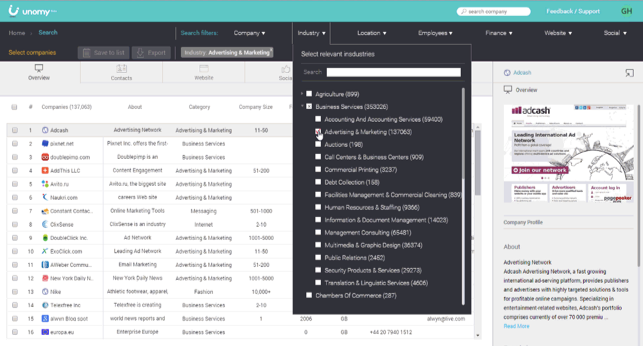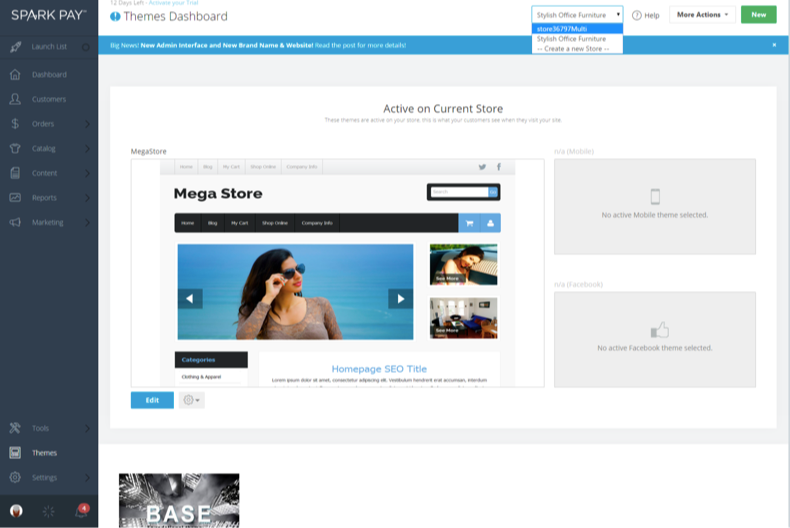KISSmetrics: The 4 Most Overlooked Factors in Your B2B E-Commerce Success
KISSmetrics: The 4 Most Overlooked Factors in Your B2B E-Commerce Success |
| The 4 Most Overlooked Factors in Your B2B E-Commerce Success Posted: 04 Mar 2016 10:00 AM PST There are many similarities between B2B and B2C when it comes to e-commerce. Some of these overlaps are easy to spot: key elements like intuitive search, high-quality product images, and the need for simple navigation. However, due to challenges such as longer buying cycles, higher volume sales, lower price points, and multiple decision makers, the path to B2B success requires a subtly different approach than plain-old B2C strategies. In fact, there are at least four commonly overlooked factors that — if harnessed correctly — can elevate you to B2B e-commerce domination. Not surprisingly, each of these factors is rooted in B2C best practices. But what matters is how you augment, correct, and — in some cases — supercharge those B2C building blocks for a B2B audience. 1. PersonalizationIt's a universal truth that people don't buy from companies … people buy from people. Personalization — or perhaps better, positioning yourself like a real person in relationships with other real people — is the number one overlooked factor in B2B e-commerce. This is because B2B businesses fear coming off as unprofessional, amateur, or "small time." Behind this fear lies a misconception that's seductive precisely because it's rooted in the very real difference between B2C and B2B transactions. As Glenn Taylor explains, "B2B marketing, unlike B2C, is primarily account-based, which means that buyers are purchasing on behalf of an entire company. In enterprise, this process rarely involves one individual, but does make qualities of buyers at the account level more predictable." However, just because "this process rarely involves one individual," does not mean that your B2B efforts involve no individuals. In other words, B2B doesn't remove the need to address those individuals … individually. The truth is that having a light, personalized, and casual tone in your communications actually boosts conversions and brand loyalty. Even more to the point, Gartner predicts that by 2018, "B2B companies with effective personalization on their e-commerce sites will outsell by 30% competitors without the same level of personalization." Why? Because humans not only want to connect with other humans … we all want to be treated like humans. And that means businesses buy from business they connect with — not stuffy organizations that appear cold, lifeless, and run by robots. The primary way B2B violates personalization is by falling into the trap littering their communication and messaging with impressive-sounding words that are empty of meaning and detract from encouraging interaction with their brand. Forbes' list of the "The Most Annoying, Pretentious And Useless Business Jargon" — which includes impersonal phrases like "core competency," "move the needle," and "bleeding edge" — is a phenomenal resource to check your own communication against. Providing a personalized experience also applies to lead generation. For instance, Unomy specializes in building lists of targeted prospects — not just companies with their comprehensive profiles, but the names and contact details of real decision makers. This allows you to learn everything about the company in seconds and reach out to them in a personalized and informed manner.  One powerful feature is the ability to upload lists of email addresses or URLs and Unomy will instantly create a complete 360 degrees view about these entities. This will save you research time so you can prioritize leads and focus on the most important ones. Lastly, do not overlook the power of personalization when it comes to user-generated content, especially testimonials. As Yotpo recently reported, Facebook ads that feature user-generated content on average deliver a 300% higher CTR than "brand-only content ads." Regardless of the tool or tack you choose, remember … personalization means one thing: humans connecting with humans. 2. ShippingWith so much time spent optimizing for the wide-end of the funnel, many B2B e-commerce stores overlook the glaringly obvious process of shipping, fulfillment, and order satisfaction. The level of service you provide in this area plays a critical role in not only maintaining your B2B relationships, but on establishing those relationships in the final stages on an initial purchase. In other words, your shipping can make or break your conversions both in the short term … and the long term. As UPS discovered in a case study on online shopping generally:
In fact, shipping charges — namely "unexpected shipping charges" — are the number one reason for shopping cart abandonment across the board. While those are striking number in the big picture, how does shipping affect B2B e-commerce in particular? The most prominent challenges facing B2B shipping comes from the fact that B2B models operate predominantly in the wholesale market. As a result, not only is drop shipping incredibly common — which involves multiple touch points that B2B companies themselves do not have direct control over — but international order fulfillment as well. This means that finding "an affordable and reliable shipping company, monitor[ing] shipments, and fil[ing] the proper documents for customs clearance" are top priorities for B2B growth. To address that need, Chinese e-commerce giant Alibaba Group built its own shipping-meets-financing solution called OneTouch. As Internet Retailer pointed out in a profile on OneTouch, "By consolidating resources of shipping companies as well as financing services, OneTouch earns a profit while providing its service for free to exporting companies." Unfortunately, such a large-scale, in-house solution isn't always possible. Naturally, everyone aspires to provide customer fulfillment like Amazon, but taking care of the whole shipping process yourself is time consuming and resource intensive. Outsourcing the shipping process can be a smart way to save the headaches of shipping while ensuring a top-notch shipping and fulfillment process for your customers. Using a tool like Temando can help you reduce costs, increase sales, and grow your business. This means lower cart abandonment and direct integration with e-commerce platforms like Shopify, Netsuite, Magento, WooCommerce, and more. That you can focus on sales and growth, and leave the order details to the pros.  3. SegmentationHand-in-hand with the first factor — personalization — goes segmentation. In fact, segmentation is a key step behind personalization. Segmentation means dividing your leads, prospects, customers and overall market along lines like demographics, business needs, size and order volume, specific products, or length of relationship. To complete an in-depth segmentation of your market, Business2Community outlines a number of other key characteristics particular to B2B like sale complexity, purchase risk, and buying cycle. You can also characterize your B2B buyers based on "why" they purchase (that is, the driving motivation that ultimately closes the sale). The dominant influence behind each buyer's "why" should be categorized into easily divisible types such as, price, timing, and relationship. Whatever method you choose, segmentation allows you to adjust and tailor your approach to both existing customers and prospects. However, the need for segmentation is especially acute if you're an e-commerce business that has mixed B2C and B2B audiences. The answer to this need lies in what are known as "multiple storefronts." Opening multiple e-commerce storefronts allows you to create segmented user logins, URLs, product lines, pricing structures, and even designs and layouts … all with a centralized backend. In fact, Capital One's e-commerce Spark Pay lists multiple storefronts as the number one B2B e-commerce best practice. Their reasoning — just like other e-commerce platforms that offer the service — is clear: utilizing multiple storefronts enables you to consolidate your product catalog and especially your CRM within one admin console while at the same time customizing key B2B elements like discounts, products grouping, volume pricing, SEO, and widgets. Simple drop downs menus allow you to toggle between storefronts while maintaining the same behind-the-scene resources.  4. TrustIf success in B2B is all about reaching people, then trust is a crucial factor in making that happen. Trust the glue that makes your relationships stick. And this applies to first impressions as much as it applies to ongoing interactions. So what exactly are B2Bs overlooking it comes to communicating trust in the online world of e-commerce? In a word, simplicity. You've heard it before — simplicity is everything. On the design front, Oli Gardner emphasizes the importance of "designing experiences that achieve a single business goal. Create experiences that guide the visitor toward completing one specific action by using persuasive design and psychological triggers as devices to increase conversions." First impressions are even more cutthroat. According to ConversionXL, people form an opinion in about 50 milliseconds, and the majority of it is design related. The study by Consumer WebWatch showed how people associated interface design with the company's credibility, based solely on visual design (and less focus on content), meaning the layout, colors, and fonts. In Peep Laja's words, "great design gets people to trust you and to stick around. Poor design creates mistrust and makes people leave." Design your website so that every piece of copy, image, and pixel are formed with your goal in mind; to direct your prospect into your funnel — and nothing more. Cut the fat and focus. Think of simplicity the way Joanna Wiebe does:
It's essential not only to design for conversions, but also to effectively eliminate all else that could distract prospects from taking the desired action. Also make sure that your company is intentionally communicating safety and trust. A simple (wink, wink) way to do this is by following Kissmetrics' Roadmap for a Trustworthy E-Commerce Website. For B2B audiences, this means most importantly investing in trust signs signals like multiple payment options, endorsements and certifications, and multiple, secure logins created specifically with multiple decision makers and purchase levels in mind. The same … but differentB2B e-commerce success requires slightly different strategies to be successful. We've covered four commonly overlooked factors that can help you dominate the industry:
While these are all universal principles in any e-commerce game plan, knowing how to augment, correct, and supercharge them for a B2B marketing is what separates the winners from the losers. About the Author: Nadav is a veteran online marketer and the Founder & CEO of InboundJunction, an Israel-based content marketing company. Nadav helps well-known brands in boosting their online visibility through PR, SEO and Social Media. |
| You are subscribed to email updates from The Kissmetrics Marketing Blog. To stop receiving these emails, you may unsubscribe now. | Email delivery powered by Google |
| Google Inc., 1600 Amphitheatre Parkway, Mountain View, CA 94043, United States | |
